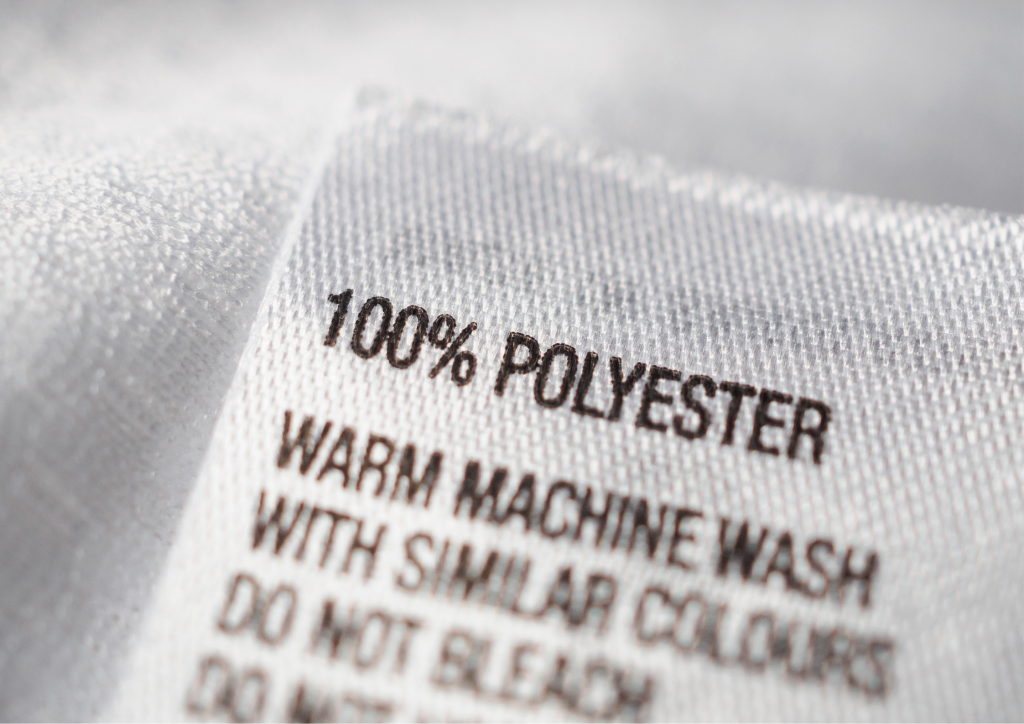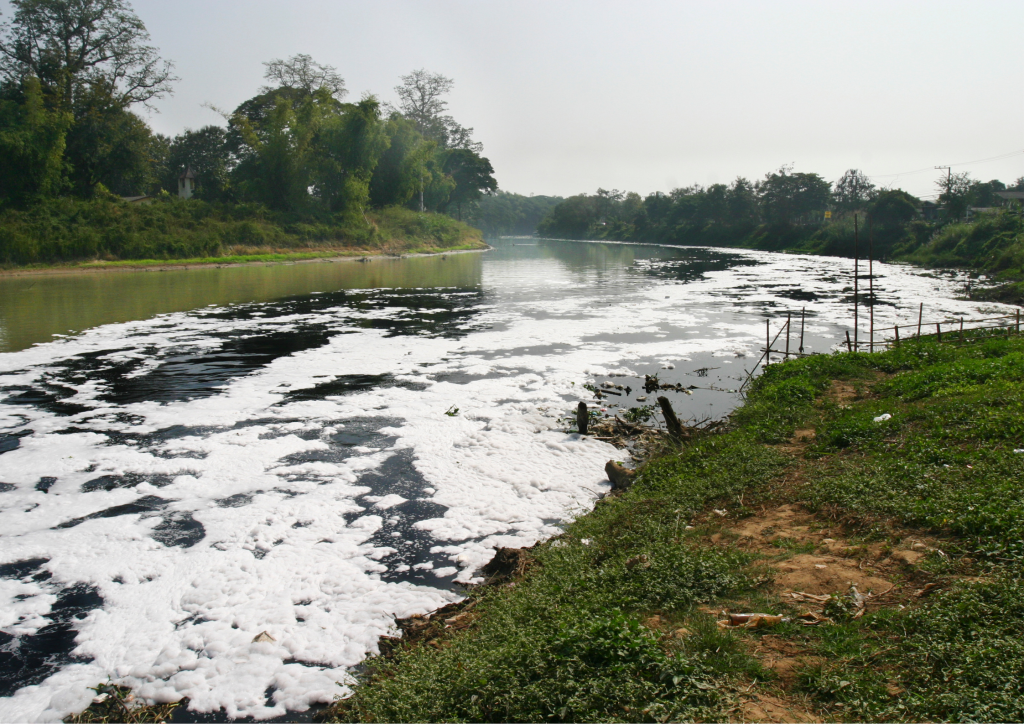Fast fashion brands responsible for environmental pollution
No doubt you’ve heard of fast fashion, but do you know why it’s a bad thing? This guest post from Ankur Pradhan details some of the worst offenders and how they’re polluting the Earth.
Fast fashion satisfies our innate desire for constant innovation, immediate consumption, and cost-effectiveness; however, it sucks the life out of the environment at the same time. The fashion industry is the second-largest polluter globally, not so far behind the oil industry. It accounts for about 10% of global carbon emissions. In addition, it steals water sources and pollutes rivers.
Soon we will have nowhere to throw away the waste that accumulates around us; soon, we will see how the breath of our environment becomes hoarse. Here are the top fashion brands that we should avoid to promote a more sustainable environment.
American Eagle: leader in jeans production and use of synthetic dyes
| Founded in | 1977 |
| Founder | Jerry Silverman and Mark Silverman |
| Location | US |
| Major Environmental Impact | Major Producer of Jeans User of Synthetic Dye |
| Sustainable Action | “Real Good” product line made with more sustainable materials |
Established in 1977 by Jerry Silverman and Mark Silverman, American Eagle Outfitters is one of the largest streetwear companies in the world. The fashion brand’s primary production is Jeans and T-shirts which use about 11,500 litres of water in its entire life cycle. It turns out jeans are the greatest source of water pollution. A group of researchers from the Canadian University of Toronto has discovered microfibers in the sediments of the Great Lakes, which are located on the border of the United States and Canada.

Forever 21: short life clothing manufacturer
| Founded in | 1984 |
| Founder | Do Won Chang, Jin Sook Chang |
| Location | US |
| Major Environmental Impact | Cadmium jewellery + lack of environmental policy |
| Sustainable Action | Declared bankrupt |
Forever 21 is an American brand offering a wide range of clothing, shoes, and accessories for women and men. However, more than once, other brands and fashion designers have filed lawsuits at Forever 21. It also has scandals related to the violation of labor laws by the company: workers claimed that they were paid below the living wage and documented underestimated working hours. There were also rumors about the scandal that unfolded in 2011 around the abuse of cadmium in the brand’s jewelry.
This brand has no good environmental policy, which you can understand when you see the materials used. Forever 21 is one of the brands refusing to sign the Building Safety Agreement in Bangladesh.

Gap: main polluter of Indonesian Citarum river
| Founded in | 1969 |
| Founder | Donald and Doris Fisher |
| Location | US |
| Major Environmental Impact | Indonesian river pollution |
| Sustainable Action | Launched environmental campaign |
The North American brand Gap is one of the most representative in the country and the most popular in Europe. However, Gap is also a huge case of environmental pollution, especially in Indonesia. A 2013 Greenpeace study revealed that Gap hired the services of suppliers that pollute the Indonesian river Citarum with toxic chemical substances in the west of the island of Java. In addition, raw materials used for dyeing fabrics indicated that the wastewater from the industrial complex was not being treated even in the most basic way before being discharged into the river.

H & M: misleading consumers via greenwash tactics
| Founded in | 1947 |
| Founder | Erling Persson |
| Location | Sweden |
| Major Environmental Impact | Use of Viscose |
| Sustainable Action | Use of cellulose fibres extracted from pineapple leaves, greenwashing |
Established in 1947 by Stefan Persson’s father, Erling Persson, the company has developed into a fashion empire worth millions. However, the fast-fashion brand is criticised for its negative environmental impact. According to the 2017 Changing Markets Foundation investigation, H&M bought directly from seven of the viscose factories investigated in the report.
The Changing Markets Foundation collected evidence in parts of Indonesia, China, and India showing pollution in viscose production as factories dump their raw sewage directly into lakes and local water sources. New research from the Changing Markets Foundation in July 2021 revealed that H&M routinely misled consumers by implementing greenwashing tactics. This company is addicted to the use of fossil fuels.

Primark: addicted to fossil fuel use
| Founded in | 1969 |
| Founder | Arthur Ryan |
| Location | Ireland |
| Major Environmental Impact | Fossil fuel use |
| Sustainable Action | Use of recycled plastic |
Primark is an international brand that provides the latest fashion, beauty, and home products at the best price, even in the most remote corners of the planet. Primark announced its ecological promises like other big brands mentioned above; the recent study suggested otherwise.
A 2021 study by Changing Markets Foundation reported that Primark, like other fast fashion brands, is also highly addicted to the usage of fossil fuels. The report also revealed that the brand, though committed to phasing out virgin polyester, is not doing so for synthetics in general.
They tackle the fossil fad problem by replacing virgin polyester with single-use PET plastic bottles that are being under-recycled. Using PET bottles is part of the manual of false solutions of the ”use and throw” industry. It is a direct path to landfill, incineration, or contamination of seas and oceans.

Shein: pioneer of cheap polyester clothing production
| Founded in | 2008 |
| Founder | Chris Xu |
| Location | China |
| Major Environmental Impact | Polyester production |
| Sustainable Action | Use of recycled fabric + modern technology for graphics printing |
Shein has become one of the most well-known sites for young people and fashion hauls. However, the company has been criticised for polluting the environment with huge production volumes. The consumer can wear the bright, trendy outfits only a few times before being thrown away, and cheap materials form polyester microplastics in the wash.
The production of polyester relies on oil and coal extraction. Likewise, the fabric does not biodegrade like natural materials. Shein still claims that they want to use more recycled fabrics, and that their technology for printing graphics and prints is less polluting than traditional methods.

Uniqlo: Promotes natural cotton fabric that is not so organic
| Founded in | 1984 |
| Founder | Tadashi Yanai |
| Location | Japan |
| Major Environmental Impact | Cotton clothing |
| Sustainable Action | Recycle 50% of its materials + use of renewable energy sources |
Uniqlo is a Japanese brand that makes clothes for men, women, and children. The collection of “ultra-light down jackets” and wrinkle-free cotton shirts and T-shirts made the Uniqlo brand famous worldwide. Despite cotton being a natural fiber that can biodegrade at the end of its life, it is also one of the most environmentally demanding crops.
Cotton is a very water-intensive crop to grow and process, taking between 10,000 and 20,000 gallons of water to make a single pair of jeans and up to 2700 to make a T-shirt. Cotton farming also utilises high levels of pesticides and toxic chemicals that seep into the soil and water supplies.

Urban Outfitters: questionable sustainability policy
| Founded in | 1970 |
| Founder | Richard Hayne, Judy Wicks, and Scott Belair |
| Location | US |
| Major Environmental Impact | Use of chemicals + lack of animal welfare |
| Sustainable Action | Usage of recycled fabric + use of organic cosmetics |
Urban Outfitters is a big player in the fast fashion industry, owning Anthropologie, Free People, BHLDN, Terrain, and Vetri. However, Urban Outfitters’ concept of sustainability has been questioned. In 2019, Green America, a non-profit organization dedicated to social and environmental justice, studied the chemical practices of 14 American clothing brands.
In a report, Green America said four companies — J.Crew, Urban Outfitters, Forever21, and Carter’s came in last because they all failed to disclose the chemicals they use in their manufacturing. Urban Outfitters is also condemned for its lack of an animal welfare policy. They use leather, wool, and exotic animal hair from unknown sources. In October 2020, protesters gathered outside stores for this reason.

Victoria’s Secret: secretive about its environmental policy
| Founded in | 1977 |
| Founder | Roy Raymond Gaye Raymond |
| Location | US |
| Major Environmental Impact | Deforestation + usage of toxic chemicals |
| Sustainable Action | Transparency to the usage of toxic products |
Founded on June 12, 1977, in Palo Alto, California by couple Roy Raymond and Gaye Raymond, the brand became a massive hit and gained mass popularity after being sold to Leslie Wexner in 1982.
However, the lingerie brand was accused of poor working conditions, animal testing, using raw materials that contribute to deforestation, and they’re suspected of making children work in their factories. On top of all that, Victoria’s Secret has been singled out by Greenpeace as one of the least eco-friendly brands with toxic products used in clothing manufacture.

Zara: culprit of African river pollution
| Founded in | 1975 |
| Founder | Amancio Ortega, Rosalía Mera |
| Location | Spain |
| Major Environmental Impact | African and Chinese Water Pollution |
| Sustainable Action | Use of recycled fabric |
Zara is a Spanish clothing company whose main headquarters are in La Coruna, Galicia. In 2012, Zara was accused of increasing water pollution in China. An investigation carried out by five NGOs, the Department of the Environment of the Chinese Government and the Friends of Nature Association of this country revealed that the Spanish Zara seriously pollutes the water due to their manufacturing systems. In August 2021, Water Witness International (WWI) published a report in which it held the big fast fashion brands such as Zara responsible for altering the physiognomy of African rivers.

Conclusion
We can no longer be consumers without conscience. Today there is a lot of information about the various products we buy, food, clothes, shoes, accessories, and more. Investigating brands and reading labels and tags are simple and easy strategies to avoid compulsive consumption which is bad for people and the environment.
About the author
Ankur Pradhan holds a bachelor’s degree in education and health and has three years of content writing experience. Addicted to online creative writing, she puts some of what she feels inside her stormy heart on paper. She loves nature, so she is trying to motivate people to switch to alternative energy sources through her articles.










